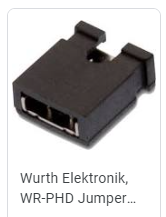Hi!
I'm a student working on my master thesis with almost no experience to the nRF52series.
I initially want to flash code though a nRF52840DK using the onboard debugger to a custom board with a nRF52840.
I'm not sure if there is hardware/design faults on the board or that my setup from the nRF52840DK to my board is wrong. I used the programmer tool from "nRF Connect for Desktop". I assumed that when connected to the nRF52840DK my nRF52840 (on the custom board) would appear when choosing devices. That did not happen.
The connection that has been made:
- µUSB to the nRF52840DK
- Cable from Debugout on the nRF52840DK to Debugin on my custom board.
- My custom board is power through an external power supply.
Because I was unsure of design faults on my custom board I tried setting up two nRF52840DK to ensure that my debug setup was correct.
Connections that has been made with two nRF52840DK:
- µUSB to nRF52840DK(1)
- Cable from debug out on nRF52840DK(1) to debug in on nRF52840DK(2)
- µUSB to nRF52840DK(2) connected from another pc than the nRF52840DK(1)
For both DK:
- SW8 is switched to ON
- SW6 is switched to DEFAULT
- SW9 is switched to VDD
The cable I have used between the debugout and debug in are a two 10pin flat cable that are connected together (not reversed)
Is my setup wrong? How can I program an external board or another nRF52840DK by using the onboard debugger on a separate nRF52840DK?

